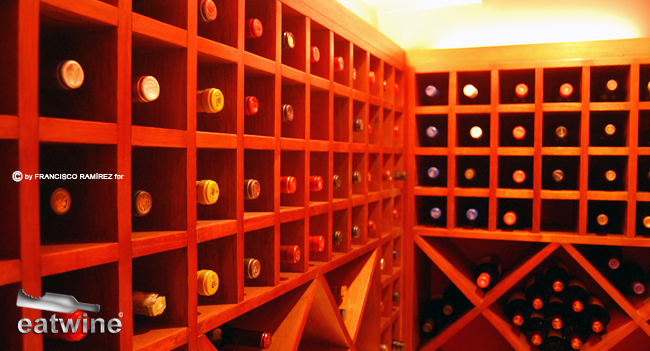Chilean Cabernet Sauvignon is, quite frankly, a rock star grape here. This late-ripening grape was brought from France in the mid-1800s, and quickly adapted to the Mediterranean climate, flourishing in vineyards in the Central Valley like the Maipo, Cachapoal, and Colchagua.
The climate here has all the right makings for serious Cabernet–on par with the best in the world. Particularly in the high Maipo region, the dry, warm climate and cool nights during the summer, allow the grape to ripen at its own pace, and thoroughly. No green berries coming in at harvest, thankfully. The fruit is rich, full of (smooth) tannins, retains good acid, and subsequently develops into powerful, fruit forward wines that have Cabernet lovers worldwide swooning.
During the early years of export, Chile became well known for its “cheap and cheerful” Cabernet. While there definitely are some easy-drinking winners, ideal for burgers, picnics or Indian cuisine, in this post, I want to talk about the opposite end of the spectrum–Cabernets that are benchmarks for Chile.
The parameters? It has to be Chilean (obviously). It has to be 100% Cabernet. This is actually not as easy as you’d think, many “icon” wines are blends like Almaviva or Clos Apalta. Here go my top four, in no particular order. I will admit that I have a favorite…any guesses?
Chadwick 2008: Part of the Errazuriz family, this label makes this famed Cab in the Maipo Valley, not far from the Andes in one of the best areas in Chile for Cabernet. The nose of this wine is filled with aromas of cassis (black currant liqueur), lush berries, and plum. There are faint “whiffs” of tobacco and something earthy-herbal, like cedar. In the mouth, this wine is elegant, long, refined. The fruit is in perfect balance with the barrel, the flavors move in crescendo. It has got muscle (It’s a Cab, afterall), but nothing is overpowering. Memorable flavor and texture. Not easy to find, this Cabernet is a collector’s item with a similar price tag attached.
Lazuli 2004: Aquitania is a boutique winery that brings together the combined efforts of Paul Pontallier (winemaker of Chateau Margaux), Bruno Prats (former owner of Chateau Cos d’Estournel); Ghislain de Montgolfier (owner of Bollinger Champagne), and the Chilean oenologist, Felipe de Solminihac. These “Four Musketeers” are producing wines of high quality and incredible expression that is one of the most French-style Chilean wines out there. This wine has a nose of rich dried fruits—prunes, figs, leather, and that characteristic “mental notes” (it’s faint) so typical of the wines from this micro appellation (Quebrada de Macul) in the high Maipo. In the mouth, it’s powerful, smooth and balanced like a Bordeaux. Delish. Best part? You can get the back vintages at Sherry-Lehman online. Price-quality ratio is awesome.
Don Melchor 2008: Classic. Chilean. Cab. This perhaps is the embodiment of what the potential of a Chilean Cabernet can be when every minute detail is addressed in the best possible way. It’s a little Cabernet poetry made just for your palate. The 2008 vintage is less of a rocket than other vintages which makes it more approachable. There is tons of vibrant red fruit and a lot of toasty notes from the oak. The fruit and wood will need some time, and patience, with aging to have them better integrate. If you must open it now, decant it for a few hours. It’s easy to love. It’s a wine that is round, refined, and has layers upon layers. Soon, the decanter is empty and you wonder how that happened.
Le Dix 2009: The Chilean brother of first growth Bordeaux, Chateau Lafite Rothschild, Le Dix hails from the Colchagua Valley, not the Maipo like the above-mentioned wines. Cabernet from Colchagua can be bigger, more tannic, and have notes of cooked fruit due to the heat. Not Le Dix, located in a cooler, western nook of the valley, this Cabernet packs a punch with its juicy acidity yet is elegant at the same time. Outgoing and complex. The aromas of cassis, cherries, licorice and tobacco give it a smokiness and spiciness to it. It’s ripe but fresh and very deep in flavor. Almost like a yummy wine bon bon.













